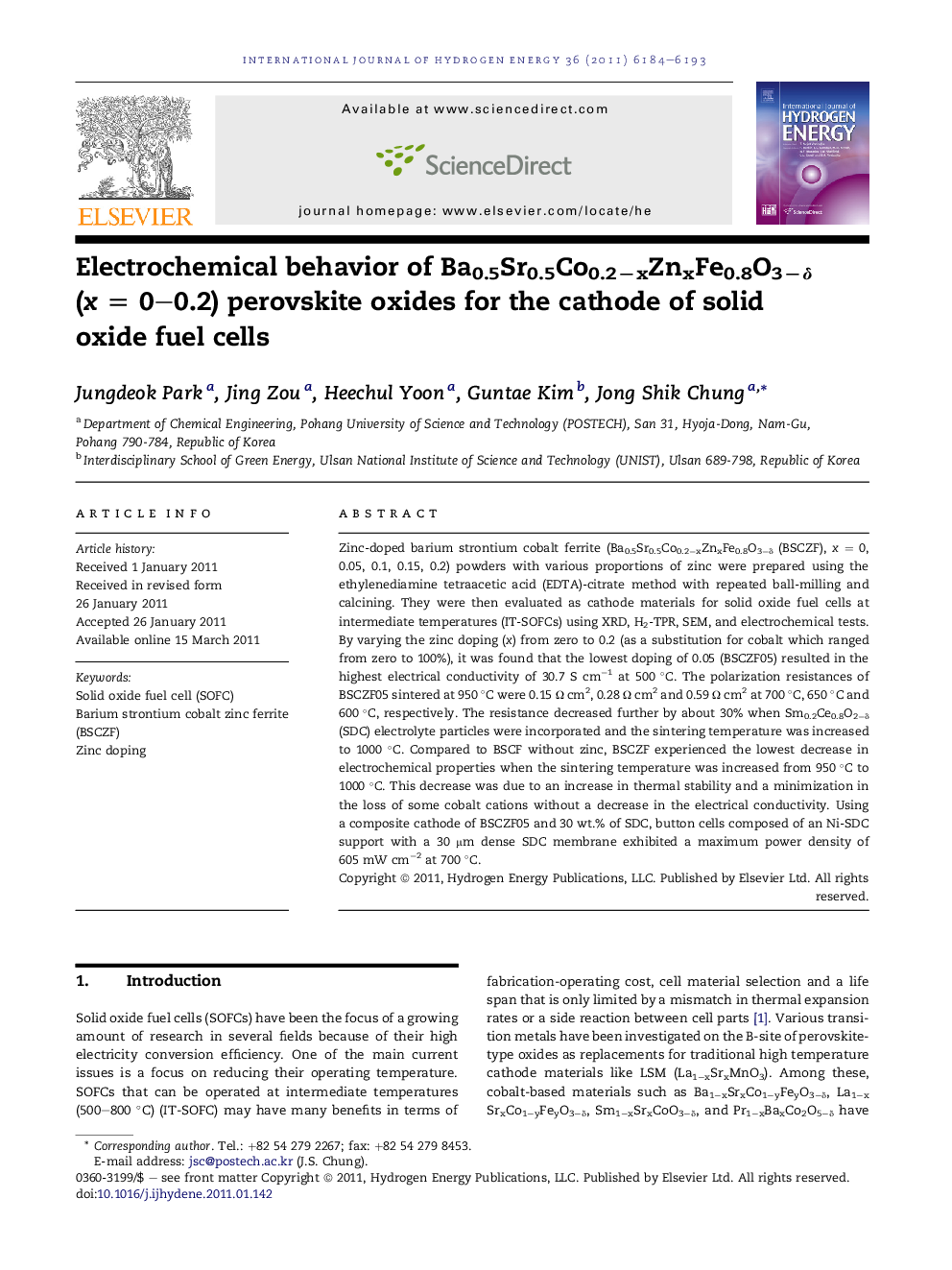| Article ID | Journal | Published Year | Pages | File Type |
|---|---|---|---|---|
| 1279549 | International Journal of Hydrogen Energy | 2011 | 10 Pages |
Zinc-doped barium strontium cobalt ferrite (Ba0.5Sr0.5Co0.2−xZnxFe0.8O3−δ (BSCZF), x = 0, 0.05, 0.1, 0.15, 0.2) powders with various proportions of zinc were prepared using the ethylenediamine tetraacetic acid (EDTA)-citrate method with repeated ball-milling and calcining. They were then evaluated as cathode materials for solid oxide fuel cells at intermediate temperatures (IT-SOFCs) using XRD, H2-TPR, SEM, and electrochemical tests. By varying the zinc doping (x) from zero to 0.2 (as a substitution for cobalt which ranged from zero to 100%), it was found that the lowest doping of 0.05 (BSCZF05) resulted in the highest electrical conductivity of 30.7 S cm−1 at 500 °C. The polarization resistances of BSCZF05 sintered at 950 °C were 0.15 Ω cm2, 0.28 Ω cm2 and 0.59 Ω cm2 at 700 °C, 650 °C and 600 °C, respectively. The resistance decreased further by about 30% when Sm0.2Ce0.8O2−δ (SDC) electrolyte particles were incorporated and the sintering temperature was increased to 1000 °C. Compared to BSCF without zinc, BSCZF experienced the lowest decrease in electrochemical properties when the sintering temperature was increased from 950 °C to 1000 °C. This decrease was due to an increase in thermal stability and a minimization in the loss of some cobalt cations without a decrease in the electrical conductivity. Using a composite cathode of BSCZF05 and 30 wt.% of SDC, button cells composed of an Ni-SDC support with a 30 μm dense SDC membrane exhibited a maximum power density of 605 mW cm−2 at 700 °C.
